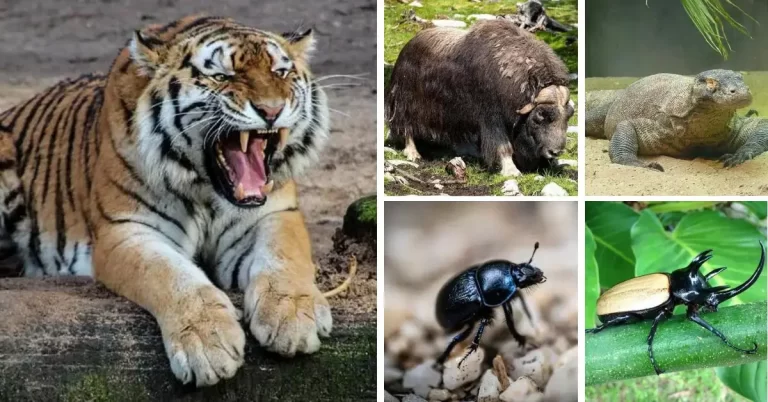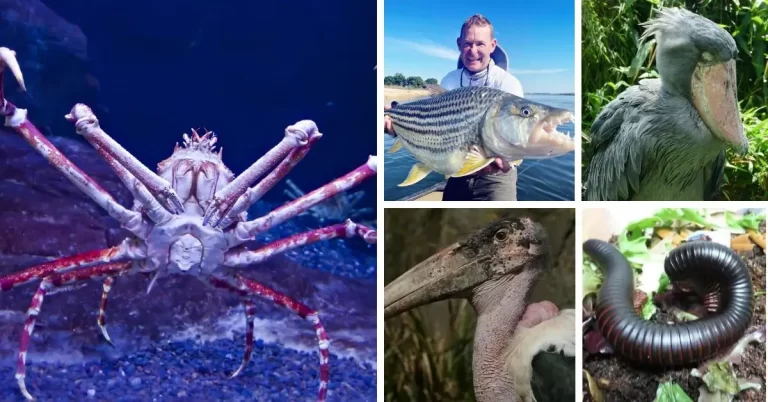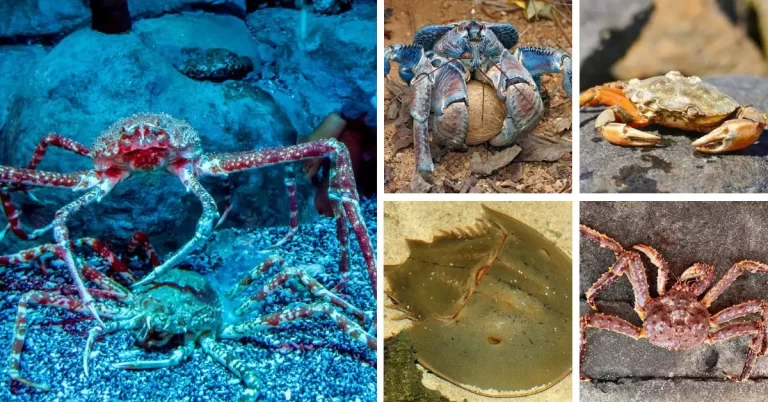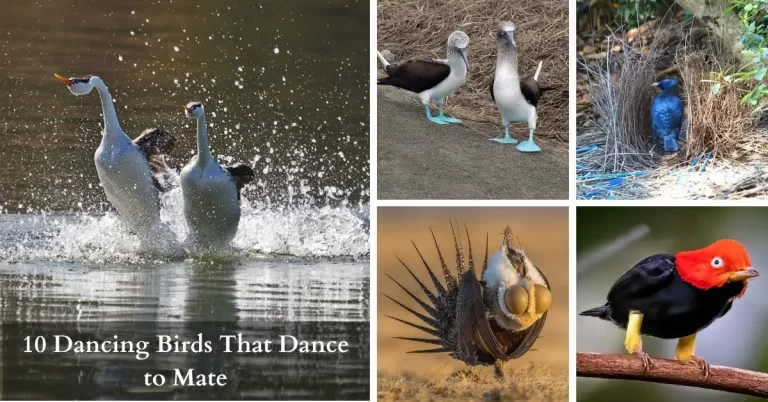Top 10 Cutest Spiders In The World
Spiders often cause feelings of fear and restlessness., but beneath their eight-legged exteriors, there exists a world of surprising cuteness. In this blog post, we aim to challenge the common misconceptions surrounding spiders and shed light on their adorable side.
many may associate spiders with creepy crawlies, there are numerous cute spider species that boast charming features and endearing behaviors. Get ready to meet the 10 cutest spiders that will make you rethink your perception of these fascinating creatures.
List of Cutest Spiders
1. Jumping Spider (Salticidae)

Jumping spiders are tiny arachnids that possess an irresistible charm. Despite their small size, they captivate with their big, curious eyes and endearing behaviors. These agile acrobats are known for their incredible jumping abilities, which they use to pounce on their prey.
These cute jumping spiders have vibrant colors and intricate patterns, often including combinations of black, white, red, orange, yellow, and green. These patterns help them blend into their surroundings or attract mates. In terms of size, jumping spiders are generally small, with body lengths ranging from a few millimeters to around 2 cm.
What makes jumping spiders truly fascinating is their curiosity. They often exhibit exploratory behaviors, moving their heads from side to side as if examining their environment. This behavior, combined with their endearing appearance and playful movements, adds to their undeniable cuteness.
Found worldwide, jumping spiders inhabit a variety of environments, including gardens, forests, and even homes. Their compact size and adorable characteristics make them a favorite among spider enthusiasts and nature lovers alike.
2. Peacock Spider (Maratus volans)

Peacock spider are a group of small jumping spiders known for their vibrant color patterns and intricate courtship displays. They are native to Australia.these tiny arachnids are renowned for their breathtaking colors and intricate mating rituals.
The males are particularly striking, with a wide range of colorful patterns on their abdomen and often have iridescent scales that can create a “peacock-like” appearance. These patterns and colors vary among species, but commonly include combinations of blue, red, orange, yellow, and black. In terms of size, peacock spiders are typically small, with males measuring around 4 to 5 millimeters in body length.
What sets the these tiny cute spider apart is the male’s extraordinary display of courtship. When trying to impress a female, he raises his abdomen, revealing a vibrant pattern resembling a peacock’s elaborate feathers. With rhythmic leg movements and vibrant colors, the male performs an intricate dance that is both captivating and endearing. This visually stunning display has earned them the nickname “dancing spiders.”
Not only are peacock spiders visually striking, but they also exhibit fascinating behaviors. They have a unique way of communicating through vibrations, tapping their legs on the ground to produce rhythmic signals. This adds an extra layer of charm to their already captivating repertoire.
3. Diving Bell Spider (Argyroneta aquatica)

Entering the world of aquatic spiders, we encounter the cutest spider diving bell. This unique species has adapted to life underwater, showcasing both fascinating characteristics and an undeniable cuteness.
Diving bell spiders, also known as water spiders. One of their attractive features is its round and fluffy appearance. With a plump body and short legs, it almost resembles a tiny floating ball of fluff. This, coupled with its vibrant coloration, adds to its undeniable charm.
They have a predominantly brown coloration, which helps them blend in with their surroundings in freshwater habitats. Their bodies are elongated and streamlined, enabling them to move efficiently through water. In terms of size, female diving bell spiders are larger than males, typically measuring around 12 to 15 millimeters in body length.
Unlike most spiders, the diving bell spider spends a significant portion of its life submerged in water. When hunting, the diving bell spider uses its specialized hairs on its legs to detect vibrations caused by prey falling into the water. It then swims out of its bell to capture its unsuspecting victim, showcasing its agile and resourceful nature.
4. Happy Face Spider (Theridion grallator)
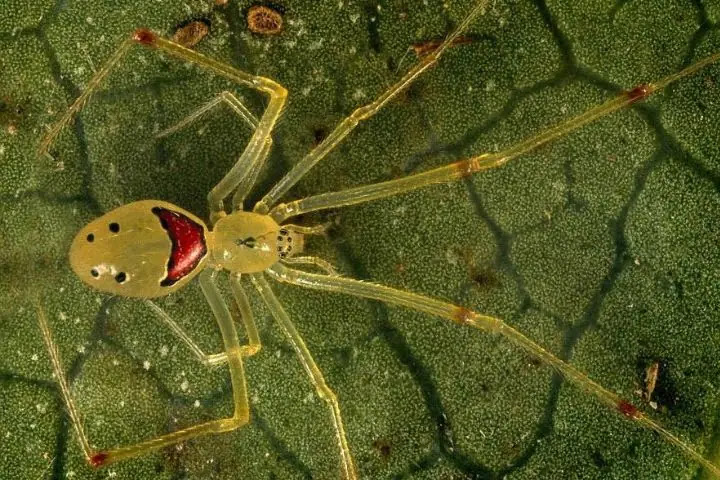
Prepare to meet the cheerful and delightful happy face spider, a tiny arachnid that brings a smile to anyone who encounters it. Endemic to the Hawaiian islands, this cute spider gets its name from the distinctive markings on its abdomen, resembling a smiley face.
What sets the happy face spider apart is its vibrant and playful appearance. With a body size of just a few millimeters, these spiders showcase a variety of colorful patterns, including yellow, red, and white. The combination of their small size and friendly markings makes them undeniably adorable.
These cute little spider are predominantly found in the lush forests of Hawaii, where they reside on leaves and blend in seamlessly with their surroundings. Despite their tiny stature, they play a crucial role in maintaining the ecosystem’s balance by feeding on smaller insects.
The happy face spider’s captivating appearance has made it a popular subject of interest among researchers and nature enthusiasts. However, due to their limited habitat range and threats to their environment, their conservation status requires attention and conservation efforts.
5. Ladybird Spider (Eresus sandaliatus)

Meet the delightful ladybird spider, an arachnid that captivates with its striking resemblance to its namesake insect. Found primarily in Europe, this spider boasts intricate patterns and endearing features that make it a true standout in the spider world.
The Ladybird Spider’s appearance is what sets it apart. With its rounded body and vivid red coloration adorned with black spots, it closely resembles a ladybug. This remarkable mimicry not only adds to its cuteness but also serves as a defense mechanism, deterring potential predators.
Despite its charming appearance, the ladybird spider is relatively small, measuring only a few 6 to 9 millimetres in length. It prefers habitats such as heathlands and grasslands, where it can find its primary food source: other spiders.
Due to habitat loss and fragmentation, the ladybird spider has become a rare sight in some regions, leading to conservation efforts to protect its population. Preserving their natural habitats is crucial in ensuring the continued existence of these adorable arachnids.
6. Orchid Mantis (Hymenopus coronatus)
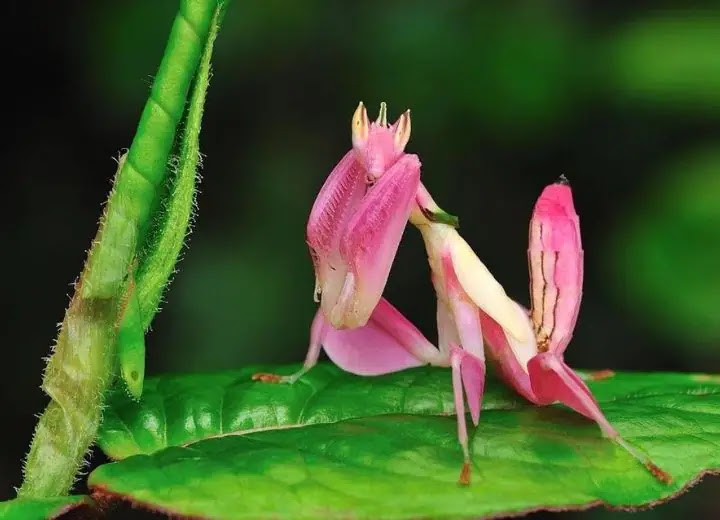
The orchid mantis, also known as Hymenopus coronatus, an arachnid that cunningly disguises itself as a beautiful flower. Despite not being a true spider, this mantis species exhibits spider-like behavior and boasts an enchanting appearance that will leave you in awe.
It is known for its attractive color patterns and camouflage abilities. It mimics orchid flowers, hence the name. The color of orchid mantises can vary from individual to individual, but their bodies are usually pink or white, with intricate patterns resembling orchid petals.
This color helps them to blend in easily with their floral environment. Female orchid mantises are larger than males in terms of size, measuring between 5 and 6 cm, whereas males are typically smaller, measuring between 3 and 4 cm.
The Orchid Mantis predominantly inhabits rainforests and other tropical regions, where it waits patiently on flowers, blending seamlessly with its surroundings. Its unique adaptations and ability to mimic nature’s beauty make it a true marvel of the insect world.
7. Peacock Tarantula (Poecilotheria metallica)

Get ready to be mesmerized by the stunning colors and gentle nature of the Peacock Tarantula. This magnificent arachnid showcases an impressive display of vibrant patterns, making it a favorite among tarantula enthusiasts and collectors.
The Peacock Tarantula, also known as the Greenbottle Blue Tarantula, hails from the arid regions of northern Venezuela. Its defining feature is its breathtaking blue legs and metallic blue-green carapace, which resemble the dazzling plumage of a peacock. This striking coloration, combined with its fluffy appearance, makes it a true spectacle to behold.
In addition to its vibrant appearance, this cutest spider boasts of a docile disposition, making it an ideal choice for tarantula keepers. While it possesses venom, it is generally considered mild and its bite is not dangerous to humans. This gentle nature, coupled with its captivating looks, has contributed to its popularity as a pet spider.
To provide the best care for a Peacock Tarantula, it requires a proper enclosure with ample space to burrow, climb, and create its web. It prefers a warm and dry habitat with moderate humidity levels. A well-maintained environment ensures the spider’s well-being and allows its vibrant colors to truly shine.
8. Green Lynx Spider (Peucetia viridans)

The green lynx spider (Peucetia viridans) is a fascinating arachnid species known for its vibrant green coloration and predatory behavior. Found primarily in North and Central America, these spiders are easily recognizable due to their striking appearance.
One of the most remarkable features of the cute looking green lynx spider is its ability to change color. They are typically green, but they may change their coloration to blend in with the flowers they live in, which improves their camouflage and makes them hard to notice by both predators and prey.
These spiders are commonly found in gardens, meadows, and shrubby areas where they build small silk retreats to rest and lay their eggs. Both males and females have long, spiky legs, which adds to their distinctive look, while the females tend to be larger and more colourful.
The green lynx spider is an intriguing species that showcases nature’s incredible adaptability and cuteness, as well as its role in natural pest control by keeping insect populations in check.
9. Cobalt Blue Tarantula (Cyriopagopus lividus)
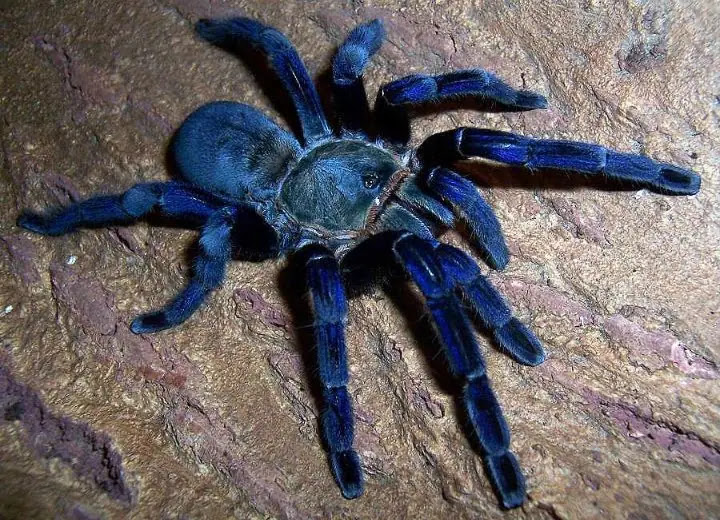
Prepare to be enchanted by the mesmerizing beauty of the cobalt blue tarantula. This striking arachnid, known for its intense blue coloration, is sure to captivate both spider enthusiasts and admirers of nature’s wonders.
The Cobalt Blue Tarantula, scientifically known as Haplopelma lividum, is native to the dense rainforests of Southeast Asia. Its name derives from the vibrant cobalt blue hue that covers its entire body, Which makes it one of the cutest spiders in the plus-looking world.
Aside from its breathtaking appearance, the cobalt blue tarantula possesses fascinating behaviors. It is an opportunistic predator, relying on its exceptional speed and agility to capture prey. In terms of size, the size of the cobalt blue tarantula spans a leg pan of 13 cm
The cobalt blue tarantula serves as a testament to the incredible diversity and beauty of the arachnid world. Its striking appearance and unique characteristics make it a standout species that continues to amaze and inspire a sense of wonder in those fortunate enough to witness its presence.
10. Pink Toe Tarantula (Avicularia avicularia)
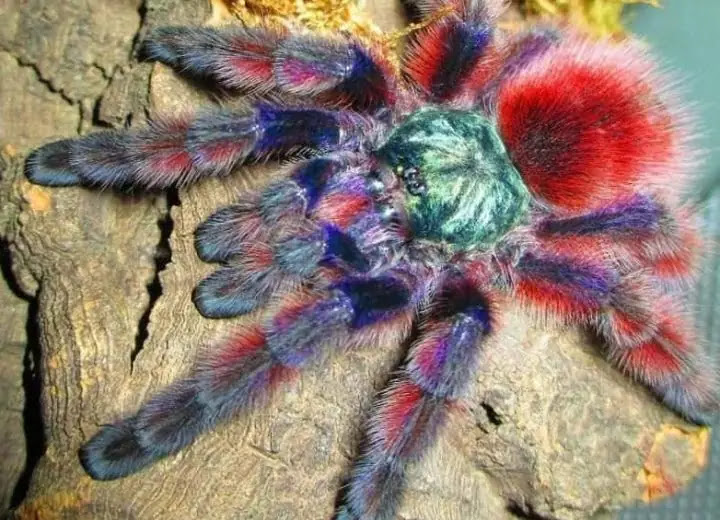
Prepare to meet the charming and delightful pink toe tarantula. This captivating arachnid, known for its distinct pinkish leg hair, showcases a combination of beauty and captivating behaviors that make it a favorite among tarantula enthusiasts.
The pink toe tarantula, scientifically known as Avicularia avicularia, is native to the tropical rainforests of South America. Its unique name is derived from the pink-colored tufts of hair on its legs, adding a touch of elegance to its overall appearance.
The overall body color of these cutest spiders can vary from brown to black, often with lighter markings. Their hind legs are about 12 to 15 cm in length, with females being larger than males.
One of the endearing qualities of the pink toe tarantula is its arboreal nature. Unlike many tarantulas that burrow on the ground, this species prefers to spend its time climbing trees and foliage. With its strong grip and agile movements, it navigates its arboreal habitat with ease, showcasing its natural dexterity.
So these were the 10 cutest spiders in the world. Have you ever seen these cute spider, please tell us by commenting.
.

